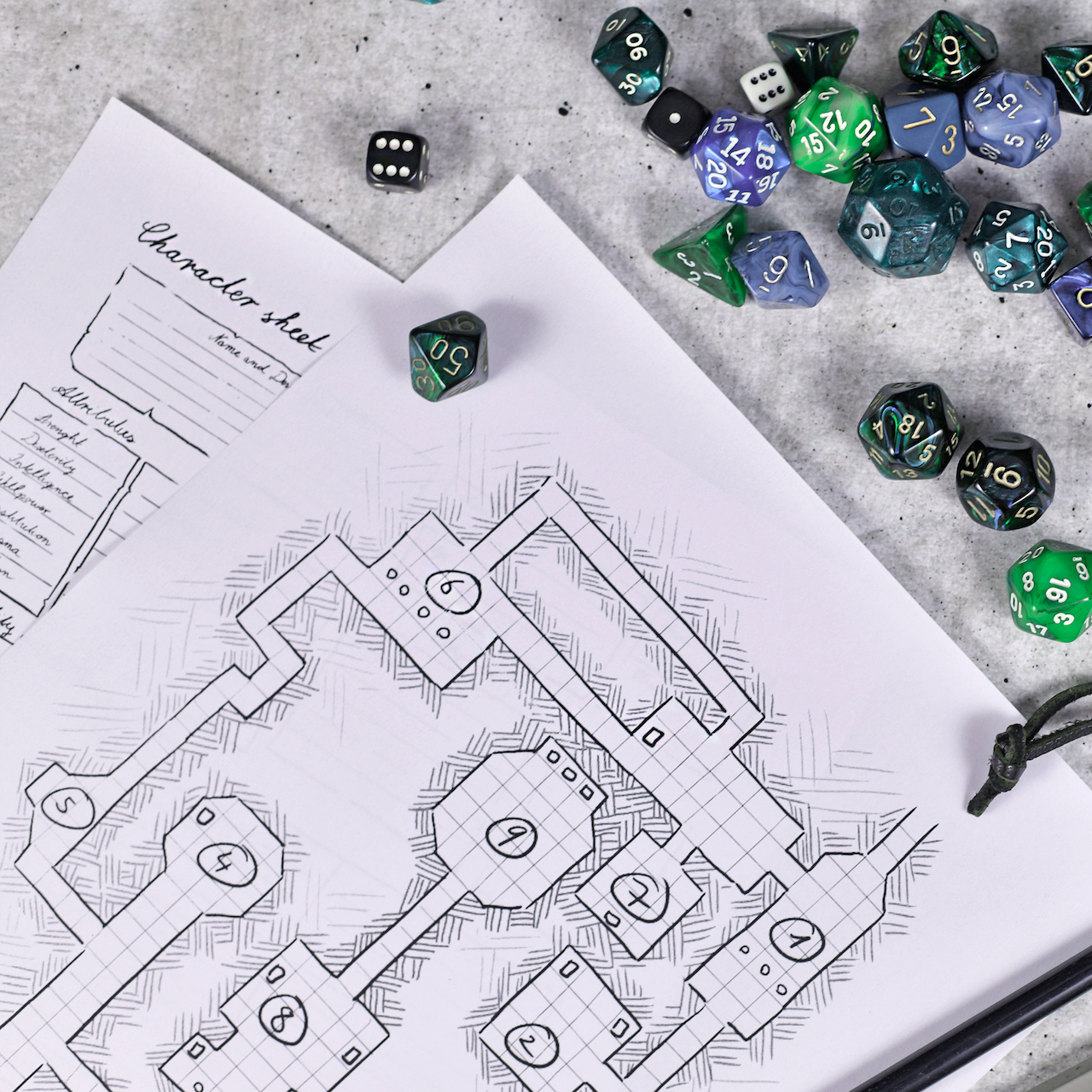
Powerful wizards rule over the people as cunning artisans fashion great machines to lead the world into a bright tomorrow. Shrewd thieves and silent assassins move through the streets, pious priests and zealous paladins call out, skilled soldiers and fierce warriors battle for dominance all as the gods of order and chaos look down ...
Welcome to Mithrym!
Mithrym is a game of exploration and adventure in which players take the roles of travellers moving through the world on a journey of discovery. Along the way they will encounter all sorts of strange people, animals and monsters. With a bit of quick thinking and a roll of the die, outcomes will be decided and new directions will be revealed, friendships will be made and lost, battles will be fought and every step of the way, your character will grow stronger and – with any luck – a little bit wiser.
What is an RPG?
RPGs – or Role-Playing Games – are a storytelling experience where each player takes the role of one member of an ensemble cast. Each player has a Character they decide the actions of, trying their best to think what that character might do in any situation. At its core, role-playing is about escapism, so it is usually best to pick a character that is very different from yourself. You could be playing as a strong fighter, a cunning thief, a powerful wizard or perhaps a faithful cleric. Then, through their eyes you will encounter people and places very different to the real world.
There is one other kind of player in a Role-Playing Game. This player is called the Game Master, and it is their role to describe the world your characters are in and to play the parts of everyone your character meets along the way.
The Game Master reads through the adventure you are playing before you start and helps to guide you through it.
A role-playing game can vary in length from a single session of a couple of hours, to an ongoing game played over many sessions as you see your characters grow and develop. At the beginning of each game, the Game Master will recap the events of the last game and set the scene for the one ahead, then it’s over to you to decide what happens next!
Always remember though, while you are the one deciding what they do and do not do, you are not your character. Try to think what they would do.
How do you win an RPG? If you make it through, with a tale or two to tell of your adventures, then everyone – the Game Master included – has won!
Understanding the Dice
During a game, the outcome of certain events will be determined with a roll of the dice … seven dice to be specific. To play Mithrym you will need a standard set of seven Polyhedral Dice. These can be bought from most game shops and they include a 4-sided, 6-sided, 8-sided, 10-sided, 12-sided and 20-sided die. They also include a second 10-sided die, though you will notice that this one goes up in 10s rather than 1s. Throughout the rules for Mithrym you will see notations like this “roll 2d6” … this means to roll a 6-sided dice twice and add the total together. Sometimes you may have a modifier to a roll, such as “1d8 + 2” … this means to roll the 8-sided die then add 2 to the result. If you need to roll 1d10 then note that most 10-sided dice have a 0 to indicate a roll of 10 … However! … if you need to roll 1d100, roll both the 10-sided dice and, in this case, the 0s count as zero. So, for example, a roll of 20 and 3 is 23 total, and a roll of 90 and 0 is 90 total.
Getting Started
Ready to give it a go? Great! First things first, decide who will be your Game Master. This player should then read through the adventure you are planning to play, making a few notes about key events, so that they have a good understanding of what is in store for you. Everyone else then needs to create a Character. Have a look here to see how you do that.
Once you have your adventure and your characters ready to go, it’s time to sit down and get started. Everyone should ideally have a notepad and pencil, their character sheet and a set of dice (although dice can always be shared by a group).
Some groups find it helpful to have a grid or map with mini-figures to help visualise the layout of a room or the formation of the group during gameplay. If you want to try this, make sure to have minis for your characters ready to go, and make sure your Game Master has minis for the people, animal and monsters too!
If you don’t have mini-figures but would still like to map out a location, you can also use standard game tokens, just make sure to keep track of which is which.
You can pause your game at any point and pick it up again later. Make sure, if you do this, to note down any key information about location and layout of the characters so that you can set it up again next time.

